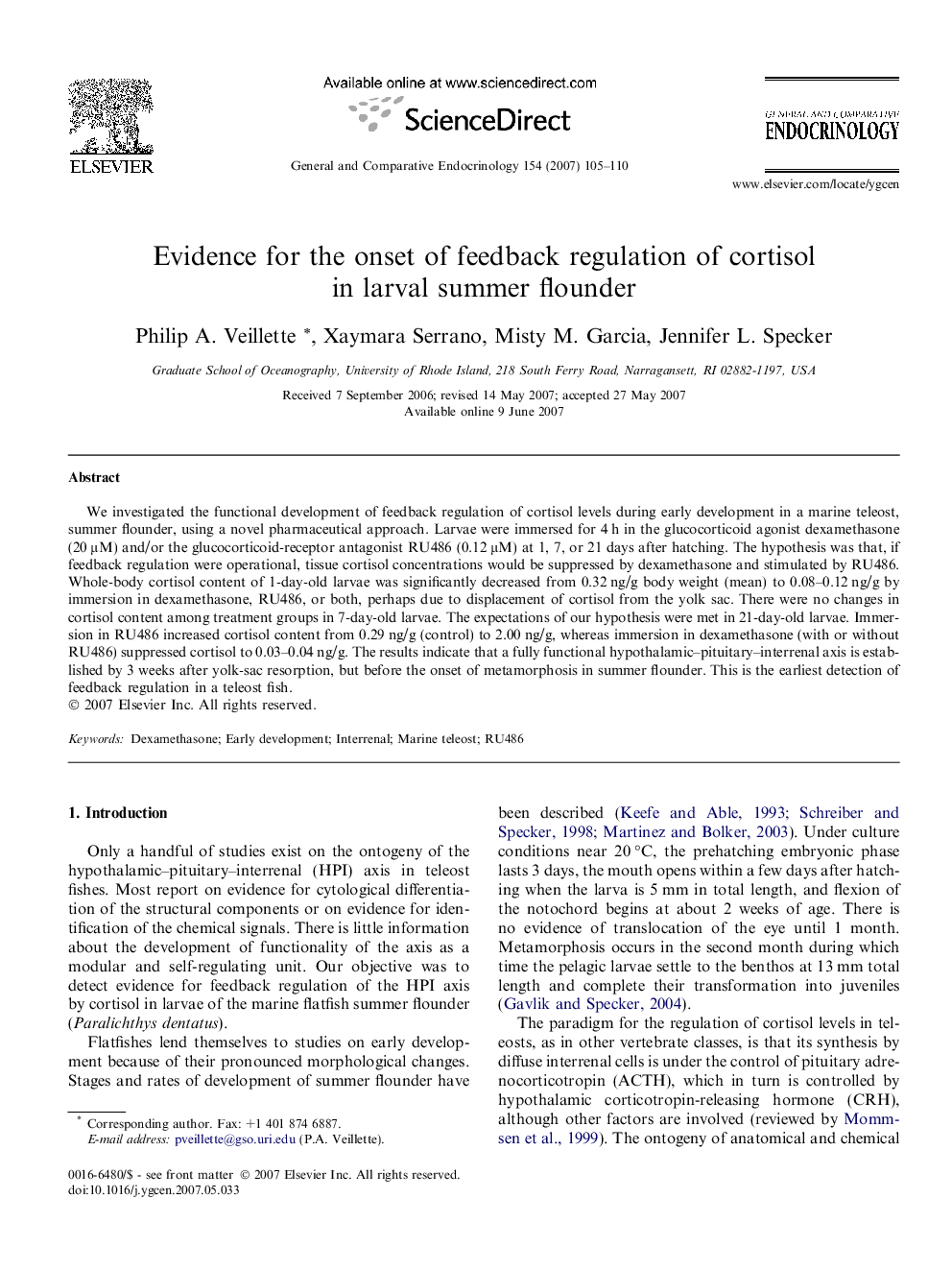| Article ID | Journal | Published Year | Pages | File Type |
|---|---|---|---|---|
| 2801677 | General and Comparative Endocrinology | 2007 | 6 Pages |
We investigated the functional development of feedback regulation of cortisol levels during early development in a marine teleost, summer flounder, using a novel pharmaceutical approach. Larvae were immersed for 4 h in the glucocorticoid agonist dexamethasone (20 μM) and/or the glucocorticoid-receptor antagonist RU486 (0.12 μM) at 1, 7, or 21 days after hatching. The hypothesis was that, if feedback regulation were operational, tissue cortisol concentrations would be suppressed by dexamethasone and stimulated by RU486. Whole-body cortisol content of 1-day-old larvae was significantly decreased from 0.32 ng/g body weight (mean) to 0.08–0.12 ng/g by immersion in dexamethasone, RU486, or both, perhaps due to displacement of cortisol from the yolk sac. There were no changes in cortisol content among treatment groups in 7-day-old larvae. The expectations of our hypothesis were met in 21-day-old larvae. Immersion in RU486 increased cortisol content from 0.29 ng/g (control) to 2.00 ng/g, whereas immersion in dexamethasone (with or without RU486) suppressed cortisol to 0.03–0.04 ng/g. The results indicate that a fully functional hypothalamic–pituitary–interrenal axis is established by 3 weeks after yolk-sac resorption, but before the onset of metamorphosis in summer flounder. This is the earliest detection of feedback regulation in a teleost fish.
